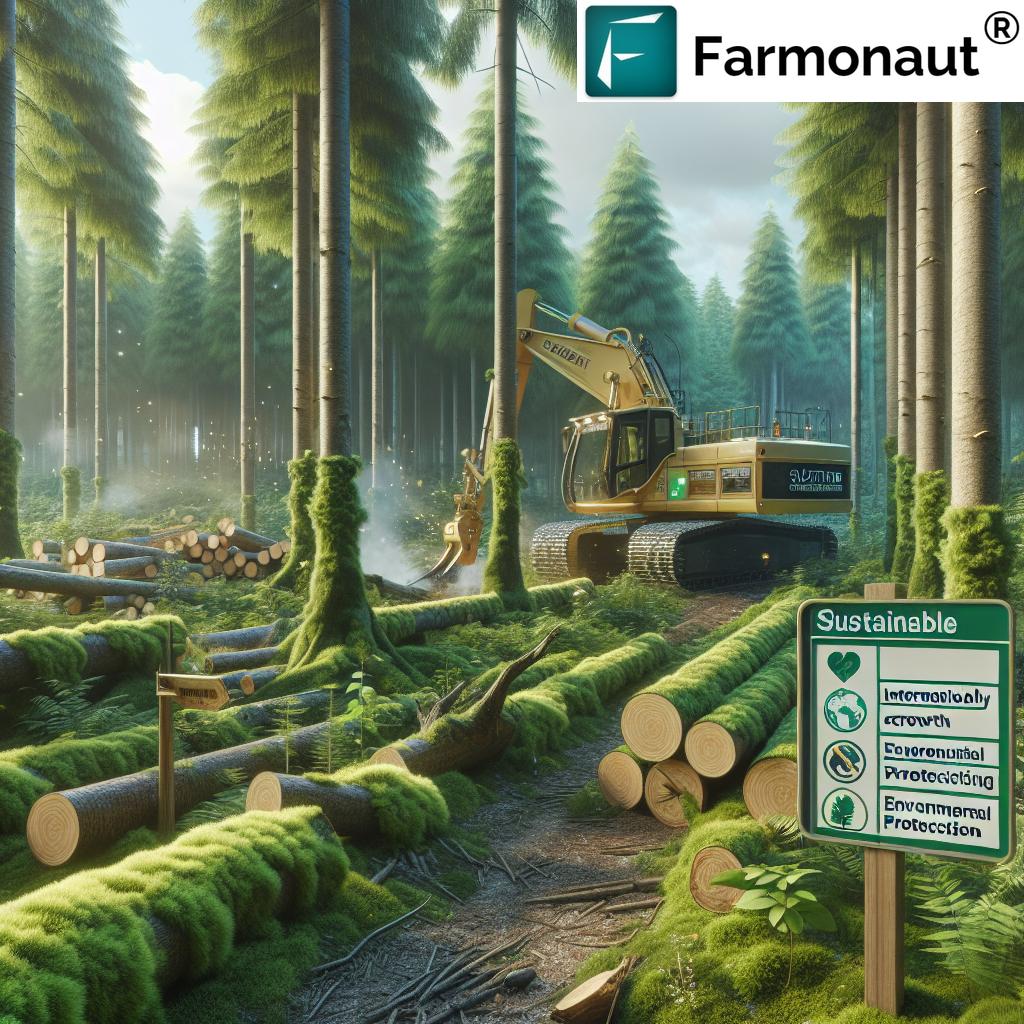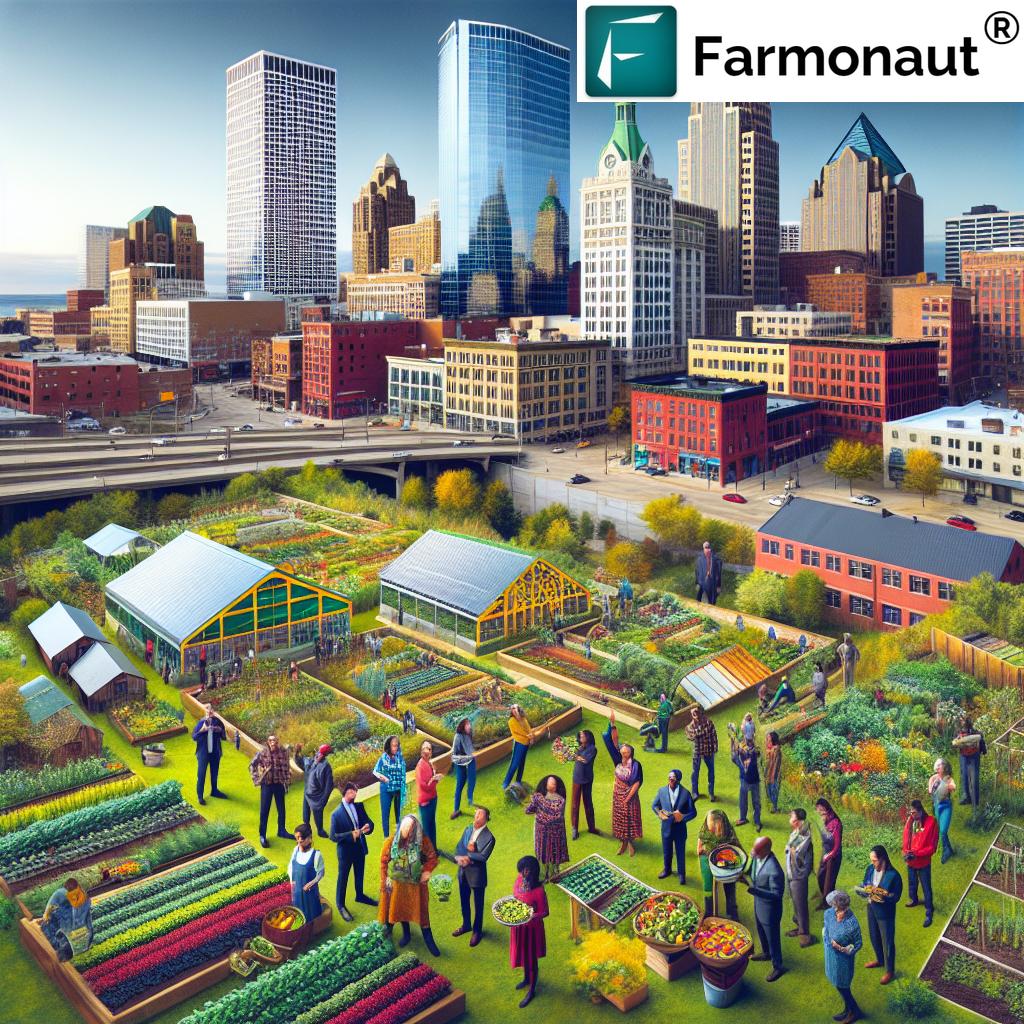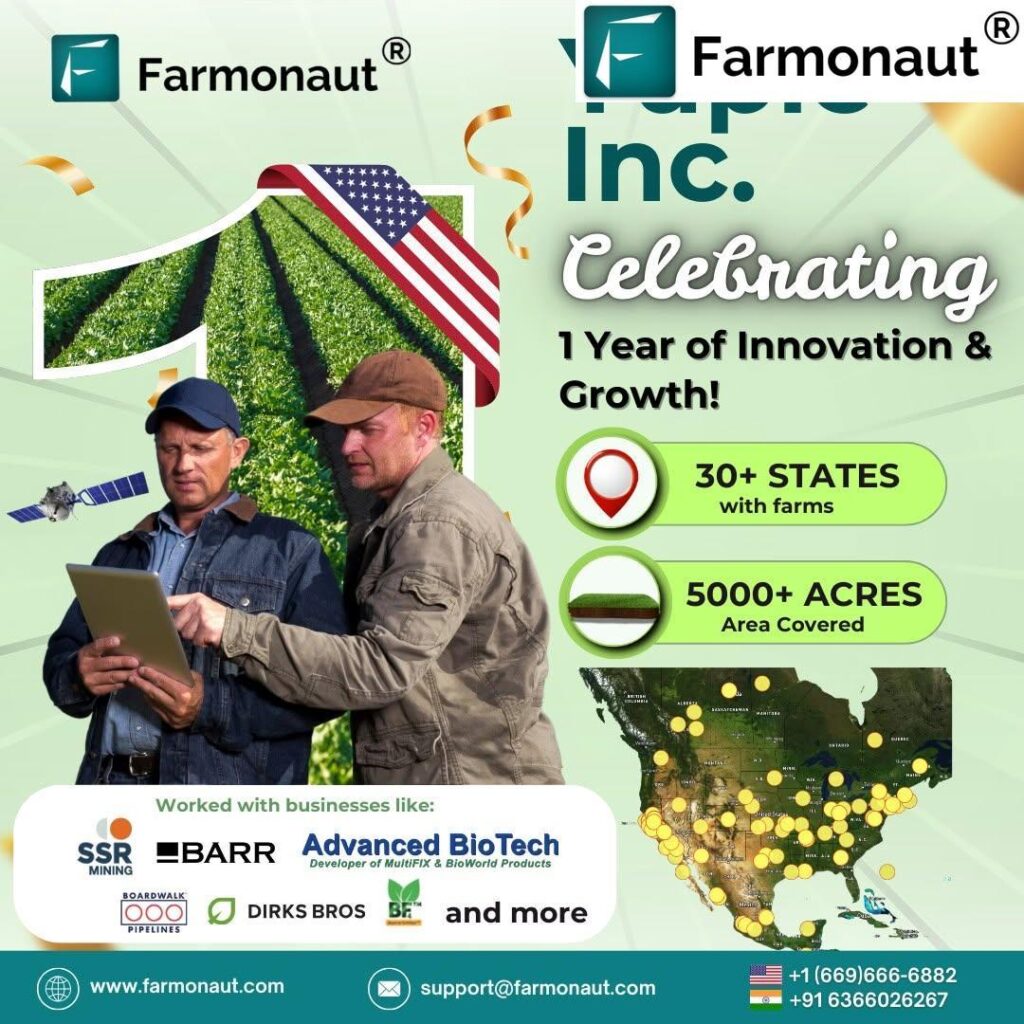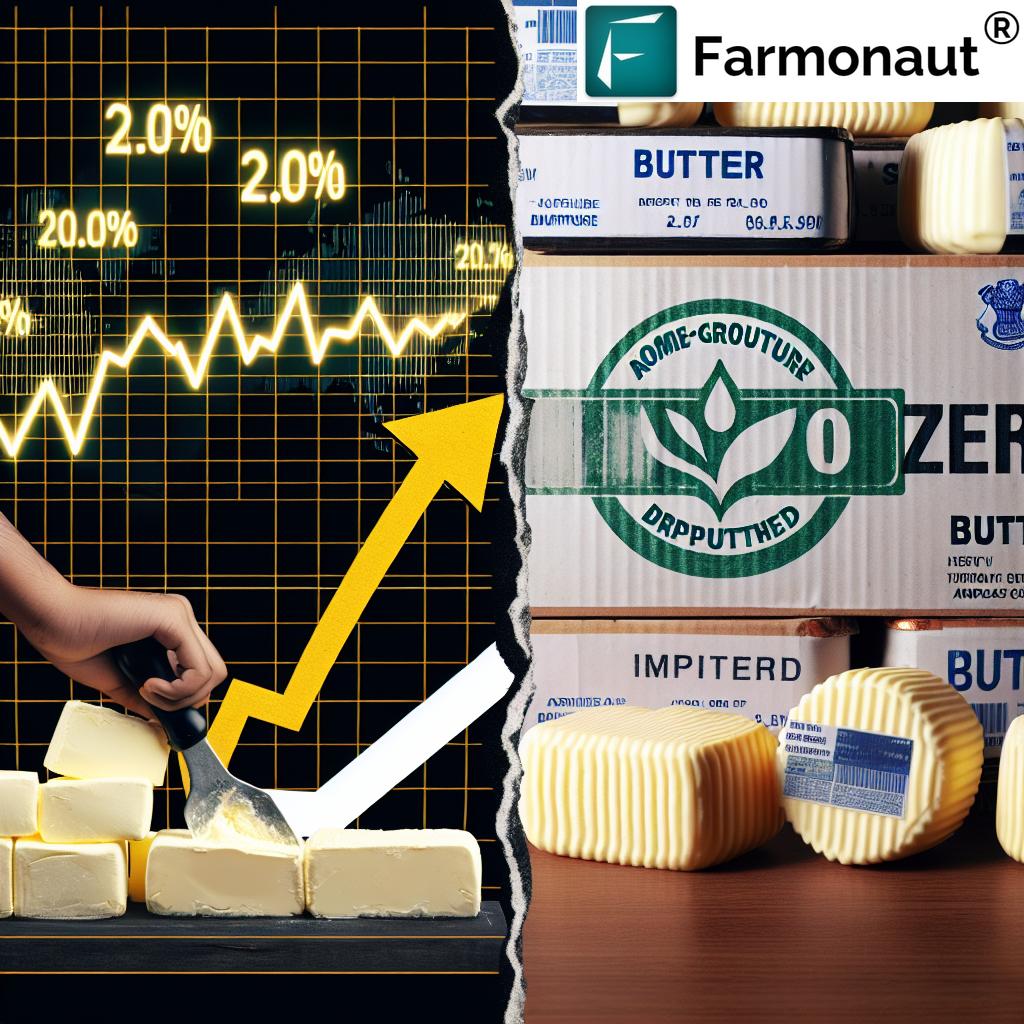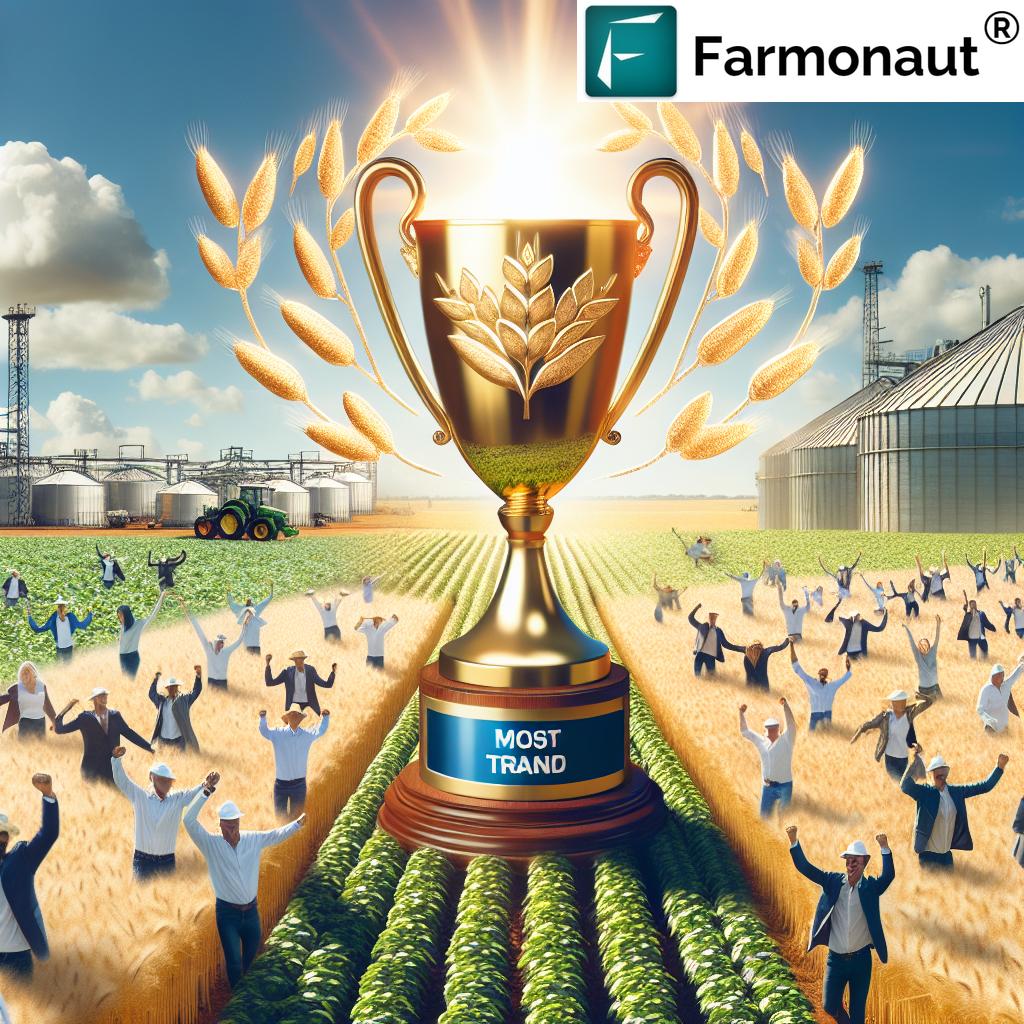“Global timber demand is projected to rise by 4% in 2025, fueled by construction and sustainability policies.”
Timber Industry Outlook: 2025 Booms & Shocking Trends!
The timber industry represents a foundational pillar in the global economy, supplying essential materials for construction, furniture production, and paper manufacturing. As of June 2025, we observe how the interplay between policy, technological advancements, and market dynamics is creating both seismic opportunities and formidable challenges for industry stakeholders worldwide.
In this in-depth guide, we’ll explore the most significant timber industry trends 2025, from the market recovery and policy decisions to sustainable forestry practices and the rise of engineered wood products. We’ll see how technological tools — including Farmonaut’s satellite insights — are helping navigate this shifting terrain, and we’ll uncover what the future holds for players at every level in the sector.
Global Timber Market Outlook 2025: Economic Recovery & Growth
Understanding 2025 Market Dynamics
The timber industry is experiencing a positive turnaround as we progress through 2025. After a period of disruption due to global uncertainties, the sector is seeing distinct patterns of recovery and growth — particularly fueled by construction demand for timber and resilient consumer demand in key geographies.
- United States: Housing starts are projected to increase by 7.5% in 2025, reaching 1.54 million units (source).
- North America: Softwood lumber consumption forecast to grow by over 7% from 2023 to 2025, totaling 57.9 billion board feet.
- Asia & China: Long-term timber demand remains robust in China despite temporary economic slowdowns (source). Urbanization and new infrastructure projects drive ongoing increases in consumption.
- Europe: Market is under pressure, partly due to delayed regulatory implementations and administrative challenges, yet demand signals remain positive.
These trends set the stage for the global timber market outlook to improve through 2025, supported by the interplay between construction sector recovery, technological innovation, and shifting policy frameworks.
“Over 60% of timber companies plan to adopt new technologies in 2025 to boost efficiency and meet market recovery.”
Why is Timber Demand Rising in Construction?
- Resurgent construction activity: Timber is a preferred material for framing, flooring, and roofing, leading to a surge in raw wood and engineered wood products.
- Urbanization in Asia: Demand for timber in China and adjoining Asian economies is bolstered by massive infrastructure investments and new city developments.
- Green building movement: North America and Europe increasingly favor sustainable forestry practices, naturally renewable wood, and carbon-conscious construction techniques.
- Influx of engineered wood products: Technological advancements such as cross laminated timber construction (CLT) are transforming the possibilities for mid- and high-rise buildings (see CLT insurance playbook).
Overall, global timber industry trends 2025 suggest an upswing in demand, particularly for sustainable and technologically enhanced products.
Policy & Regulatory Influences Shaping the Timber Industry
Policy decisions and regulation changes are profoundly impacting the timber sector in 2025. These influences govern access to national forests, shape import/export flows, and drive ecological best practices.
-
United States: Regulatory Rollbacks and Administrative Shifts
- The latest administration has rolled back environmental protections on over half of national forests to expedite logging and mitigate wildfire risks. While the timber sector welcomes more operational leeway, environmental groups warn of possible habitat loss and ecosystem health damage (AP News).
- Recent executive orders encourage increased timber harvesting, with a direct impact on the supply-and-demand equation for domestic wood materials (Axios).
-
Europe: EU Deforestation Regulation Timber & Market Responses
- The European Union Deforestation Regulation (EUDR) — designed to bar imports and consumption of timber linked to deforestation — is postponed until December 2025. This comes amid calls from the industry to align regulatory ambition with practical forest management and reduce excessive administrative burdens (Vonwood).
- Nonetheless, the delay has not lessened the emphasis on due diligence, traceability, and sustainable wood sourcing, since global consumers and governments increasingly expect sustainable forestry practices across timber supply chains.
These shifting policy frameworks affect market access, drive innovation around traceability, and force an industry-wide upgrade in governance systems.
Global Policy Trends: Navigating the Future Landscape
- Regulatory Decisions: From national forest logging allowances to international deforestation policies, global frameworks directly influence forest operations and global timber flows.
- Environmental Groups: Advocacy for stricter ecological protections continues to shape public perception and future policy direction.
- Corporate Compliance: The pressure for environmental transparency makes traceability tools, such as those powered by blockchain (see Farmonaut’s Product Traceability), a necessity for companies to demonstrate sustainable sourcing and regulatory adherence.
Timber Sector Technological Advancements: Efficiency, Data, and New Materials
In 2025, technological innovation is a central catalyst for competitive advantage in the timber sector. Big data, AI systems, and automation are being deployed across the timber supply chain to drive efficiency, minimize waste, and improve outputs.
Key Breakthroughs in Timber Industry Technologies
- Sensor-Equipped Drones & Satellite Monitoring: These tools collect critical data on forest health, pest outbreaks, and carbon sequestration potential, supporting improved management decisions and sustainable forestry practices. Solutions from technology partners such as Farmonaut enable real-time analytics for precision forestry, resource optimization, and traceability at scale.
- Automated Sawmilling & AI: New sawmilling machinery equipped with artificial intelligence boosts yield and minimizes traditional wood waste — with gains in efficiency of up to 25% (Forestry.com).
- Engineered Wood Products: Advanced cross laminated timber construction (CLT), mass timber panels, and glulam beams are now widely adopted for their strength, carbon advantages, and versatility in building design. The Mass Timber Insurance Playbook in the UK has improved insurer confidence in these new materials, helping drive adoption.
- Blockchain Traceability: Ensuring transparent wood sourcing and compliance with regulation is now a baseline industry requirement. Blockchain-powered solutions (like Farmonaut Traceability) offer end-to-end transparency and fraud reduction.
What Does This Mean for Timber Operations?
- Sustainability: Tech-enabled monitoring ensures forests are replanted, harvested responsibly, and maintained at optimal health — supporting both economic returns and ecological stewardship.
- Growth Opportunities: Operations embracing automated data analytics, fleet management, and carbon tracking position themselves for new markets and insurance solutions (See Farmonaut’s Carbon Footprinting tools).
- Scalability: Integrating technology such as Farmonaut’s Fleet and Resource Management unlocks new efficiencies in transport, logging, and supply chain scale-up.
Environmental Impacts, Sustainability, and Innovation in Timber
With mounting scrutiny over the environmental impacts of logging and the urgent need for climate solutions, the industry is moving toward sustainable forestry practices and innovation. Environmental and sustainability initiatives promise to reshape sector norms through 2025 and beyond.
Sustainability Initiatives & Eco-Conscious Timber Industry Trends
- Biodegradable Chemicals & Renewable Energy: Milling operations are adopting biodegradable wood preservatives and shifting toward renewable energy. These initiatives could cut carbon emissions by up to 30% compared to 2020 (Forestry.com).
- Reforestation and Forest Health: Restoration of logged areas, careful management of tree diversity, and disease suppression are now standard best practices — often enabled by satellite-guided monitoring.
- Measuring & Offsetting Carbon Footprints: Leading businesses track carbon, offering “climate-smart” timber products with full impact disclosure through advanced solutions like Farmonaut Carbon Footprinting.
- Traceability in Timber Supply Chains: Transparency is vital; blockchain-backed systems such as Farmonaut Traceability help verify sustainable sourcing and bolster supply chain trust.
Balancing Environmental Impact & Economic Growth
Major policy changes — such as the rollback of forest protections in the U.S. — have triggered lively debate. Environmental groups argue that logging prioritization over conservation could result in habitat loss, deforestation, and long-term ecological degradation. On the other hand, sustainable agriculture, forestry, and farming practices can align growth with ecosystem preservation.
- Policy and Sustainability: Compliance with evolving local and international regulations is likely to separate market leaders from laggards.
- Innovative Operations: Companies utilizing AI and satellite data — as enabled by Farmonaut’s Large-Scale Farm Management — gain competitive edge in meeting evolving sustainability standards.
Market Outlook: Timber Industry Opportunities & Challenges Toward 2025
As we look into the remainder of 2025 and beyond, the timber industry is at a crossroads:
-
Opportunities:
- Continued growth in global construction and infrastructure. Substantial new housing and city growth primarily in North America and Asia requires dependable, sustainable wood supply chains.
- Expansion into engineered wood and mass timber solutions such as cross laminated timber construction.
- Technological advantage via AI, automation, and data-driven forestry — the engine for efficiency, transparency, and product innovation in forestry and timber manufacturing.
-
Challenges:
- Supply chain and labor disruptions continue as aftershocks from recent global events, driving a sharper focus on automation and digitization.
- Regulatory complexity: Navigating evolving regulation such as EUDR and U.S. forest policy requires robust compliance systems and real-time data.
- Environmental scrutiny: Increased expectations for traceability, zero-deforestation commitments, and climate reporting.
- The Future: Successful timber, farming, and forest management enterprises will be those prioritizing technological adoption, compliance, sustainability, and data-driven operations.
Farmonaut’s Role in Timber & Forestry Data Solutions
As the future of forestry, logging, and sustainable construction tilts toward digital transformation, real-time data and smart technologies are becoming indispensable. Farmonaut is at the technological forefront of this shift, offering affordable and scalable tools that empower timber growers, forest managers, and rural agribusinesses globally.
How Farmonaut Accelerates Precision, Compliance, and Sustainability in Timber and Forestry
- Satellite-Based Crop & Forest Health Monitoring: Farmonaut harnesses multispectral satellite imagery to monitor the health of forests, plantations, and agricultural lands, ensuring better forest health and yield. This is critical for timber plantations aiming for sustainability certifications or climate-friendly products.
- AI-Powered Advisories: The Farmonaut platform delivers timely, actionable intelligence to forestry and timber managers — from weather alerts to pest outbreak predictions — maximizing productivity while avoiding over-logging.
- Blockchain Traceability: End-to-end product journey tracking for regulatory, insurance, and consumer transparency requirements (Learn about Farmonaut Traceability).
- Fleet and Resource Management: Optimization of logistical resources, including implementation of best practices for efficient delivery, equipment tracking, and operations management (More about Farmonaut Fleet Management).
- Carbon Emissions Tracking: Powerful carbon footprint reporting supports companies in adhering to current and emerging carbon regulations and marketing sustainable wood products (See Farmonaut’s Carbon Monitoring Tools).
- Accessible via App, API, and Web: Farmonaut’s solutions are available through a user-friendly App (iOS & Android – see buttons below), and robust API with extensive developer documentation to fit any scale operation and streamline compliance.
- Insurance and Loan Verification: Use Farmonaut’s data-backed verification services (Understand Crop Loan and Insurance Applications) to ensure risk-proof and efficient lending for timber and agroforestry initiatives.
Affordable Subscription Options for Every Operation
Whether you manage a timber plantation, coordinate forest operations, or optimize agricultural supply chains, Farmonaut’s scalable subscriptions make data-driven forestry accessible to all. Explore real-time crop, tree, or forest health metrics directly on your preferred device.
2025 Global Timber Industry Trends Overview Table
| Trend/Development | Estimated 2025 Market Impact | Estimated Market Growth (%) | Policy or Tech Driver | Geographic Focus |
|---|---|---|---|---|
| Market Recovery (Construction Demand) | High | 4.5% (Global); 7% in North American lumber | Housing policy, urbanization, infrastructure stimulus | US, North America, Asia (China) |
| Sustainability Initiatives | High | >30% reduction in carbon emissions | European Union Deforestation Regulation (EUDR), NGO pressure, eco-labels | Europe, Global |
| Technological Innovations (AI, CLT, Satellite, Blockchain) | Medium | Efficiency up to +25% | AI, automation, data analytics, blockchain traceability | US, EU, Global |
| Engineered Wood Products Growth (CLT) | High | Estimated CAGR 8–10% (2023–2025) | Innovation, green building codes, insurance reforms | Europe, North America |
| Policy & Regulatory Changes (US/European Union) | Medium/High | Dependent on policy (see EUDR, US forest policy) | Government, NGOs, trade groups | US, Europe |
| Environmental Scrutiny & Traceability | High | Indirect (market access/brand value) | Blockchain, NGO activism, consumer demand | Global |
“Over 60% of timber companies plan to adopt new technologies in 2025 to boost efficiency and meet market recovery.”
Frequently Asked Questions: Timber Industry Trends 2025
What are the main drivers for timber demand in 2025?
The key drivers are global construction demand for timber (particularly in the housing sector), the return of commercial infrastructure projects, urbanization in China and Asia, increasing adoption of engineered wood products like CLT, and policy incentives for sustainable materials usage.
How is technology transforming the timber sector?
Timber sector technological advancements include satellite-based health monitoring, drone surveys, AI-powered sawmilling, and blockchain traceability. These disrupt traditional forestry operations, enhancing efficiency, reducing resource waste, and ensuring better compliance with sustainability goals and regulations. Farmonaut’s suite of tools is helping timber and agroforestry managers unlock these benefits rapidly.
What’s the impact of new regulations (like EUDR) on timber trade?
The EU Deforestation Regulation timber rules, postponed to December 2025, require clear proof that products do not contribute to deforestation. This compels industry actors to leverage traceability solutions, often blockchain-based, and adopt sustainable forestry practices to maintain European market access.
What are the current environmental challenges facing the timber industry?
Key issues include balancing economic growth with ecosystem protection, responding to global calls to minimize deforestation, managing habitat loss, implementing carbon emission reduction initiatives, and increasing transparency in sourcing. The rollback of forest protections in certain regions has amplified the debate over sustainable forestry management.
How can timber producers improve their sustainability performance?
Timber operators can invest in real-time satellite and AI-based farm & forest management systems (such as Farmonaut Large-Scale Farm Management), implement full product traceability using blockchain, monitor carbon output, and follow best reforestation and biodiversity enhancement practices.
Conclusion: Shaping the Timber Industry’s Sustainable Future
In summary, the timber industry in 2025 sits at a historic intersection: surging construction demand, ambitious sustainability initiatives, and a rapid technological transformation are redefining what it means to be competitive and responsible in the global timber market. But challenges remain — from regulatory compliance and ecosystem health to supply chain traceability and market adaptation.
Heading into the next phase, all sector stakeholders — from forestry managers to policy makers and technology specialists — must embrace a balanced path. Only by leveraging data-driven tools, resilient operations, and ecological stewardship can we deliver on the promise of sustainable timber for a growing world.
To discover how advanced agricultural and forestry satellite solutions can help you future-proof your timber operations and drive your sustainability objectives, explore Farmonaut’s App and API platform today.


